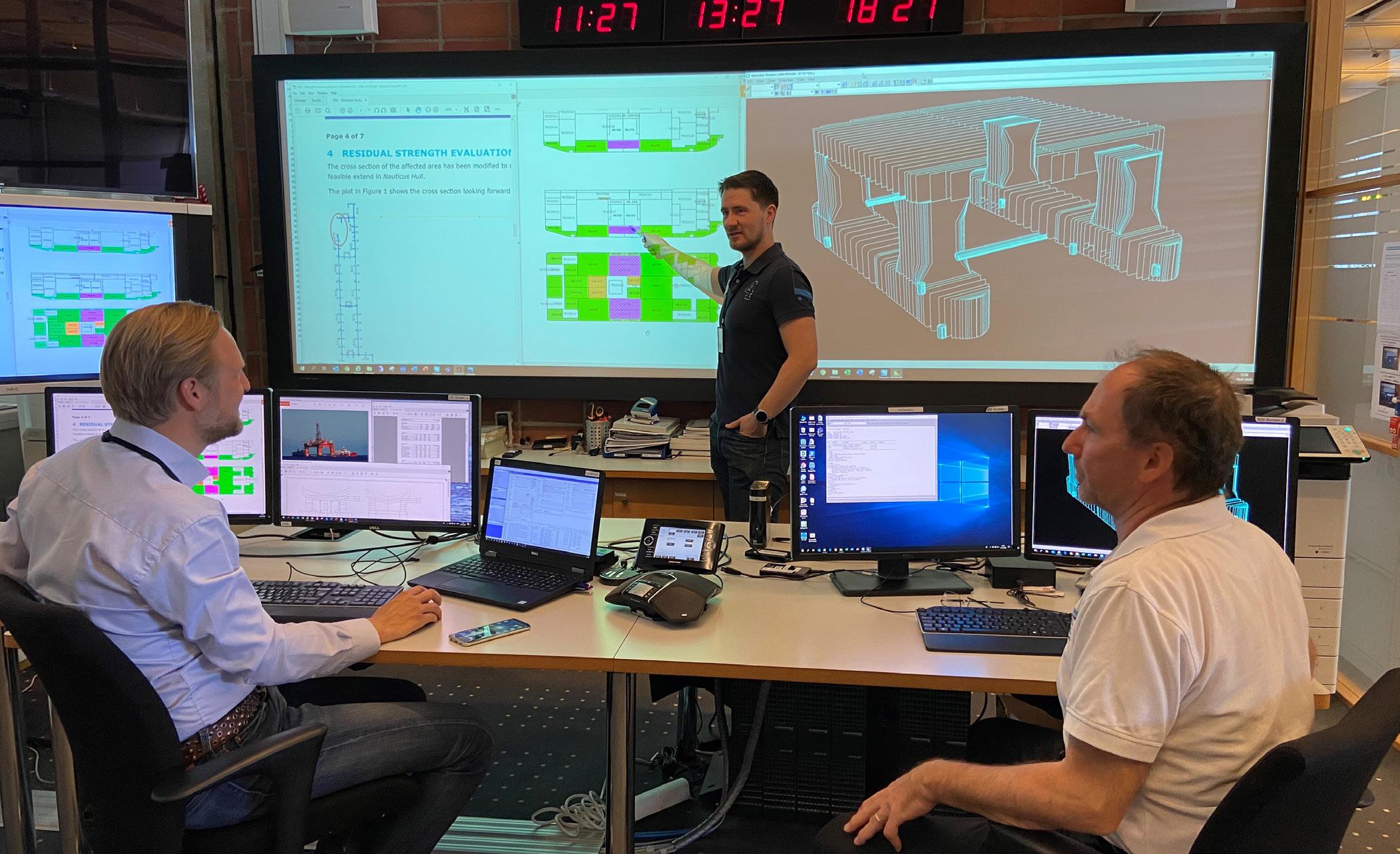
2 minute read
Improving risk management strategies
Superyachts are owned and used by some of the most high-end and demanding people in the world, who have often made fortunes by analysing risk in business ventures. DNV’s Emergency Response Service (ERS™) helps superyacht owners and captains improve their risk management strategies and ensure that they are fully prepared and supported during any emergency situation.
Owners can be more emotional when purchasing or chartering a yacht compared to decisions in their business lives; however, they do expect the industry to offer them top service in all areas, especially concerning the safety of family or guests. DNV has been offering ERS™ to the shipping industry for more than 30 years and has a vast amount of experience in managing vessel incidents.
Erlend Moe, Head of Section, DNV ERS™, based in DNV’s Norwegian headquarters, has witnessed first-hand how disasters have been averted, in both commercial and superyachting incidents, thanks to effective actions coordinated from his team. Moe appreciates that superyachts already employ dedicated personnel ashore, usually within technical management companies, but explains that DNV’s ERS™ team adds invaluable expertise to complement this organisation.
Handling incidents swiftly and discretely
Unwelcome media attention is something that all owners prefer to avoid during an incident. “Owners want to handle incidents, such as a grounding, quickly and efficiently and get back to cruising as soon as possible,” Moe says.
“DNV’s ERS™ team, on standby 24/7, is mobilised and communicates with the captain and manager, using data from prepared models, tools and drawing on our expertise, to improve the situation and reduce the risk. For a collision or grounding incident a technical manager is not always in a position to act as effectively as we can, with all necessary data and expertise from our different experts at hand.”
Collecting all necessary data to act promptly in case of an emergency
The service starts with the enrolment process, involving preparing a stability and strength model for the hull and preparing simulations, all tailor-made, stored and ready for use in an incident such as collisions, groundings, flooding, engine failure, uncontrolled drifting, spillage or fire. Professional fees during any actual incident would usually be covered by the cruise vessel or superyacht’s insurance provider and are based on time providing the emergency response service and advice.
Ultimately the level of preparedness of a crew is raised by the advance modelling and crew training and, by having experts available, mitigation of risk is assured. Seven staff are on the ERS™ Duty Team at any one time and, upon receiving an emergency telephone call, a team of three is immediately mobilised, comprising a duty responsible officer coordinating the team, a stability expert and a strength expert. A fourth expert is also to hand having the competence and capacity to provide customers with drift predictions, monitoring for example meteorological data.
ERS service available independently from class
Superyachts classed by any classification society can benefit from DNV ERS™. Presently some 15% of commercial ships using the service are not classed by DNV. The dedicated ERS™ incident response rooms at DNV are spacious and impressive. The team thrives while working under pressure and has the benefit of a calm environment to make carefully considered decisions and give sound advice. This is in contrast to the stress the crew are most likely under if they have had cause to make contact, either directly or through their DPA. A typical first critical phase time might be from 8 to 16 hours, for example to stabilise a grounded vessel so it is safe, even if remaining aground in preparation for refloating at the next high tide. Then the ERS team may be demobilised and go off duty to continue operations the next day.



